“In my work, I can say with colours what I think of my contemporaries without being sent to a concentration camp”
– Franz Sedlacek
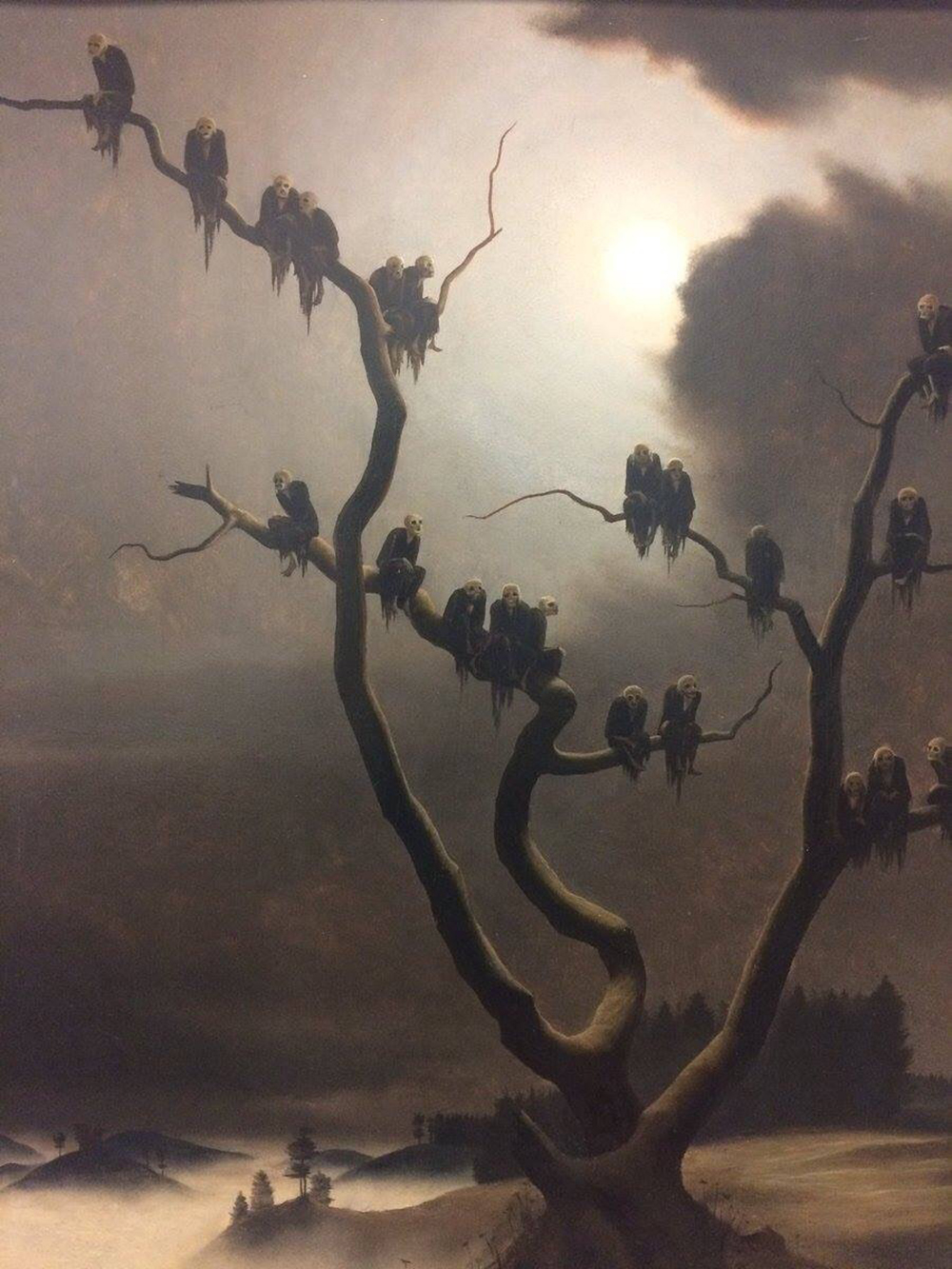
Franz Sedlacek, Ghosts on a Tree, 1933. Buy this print.
Franz Sedlacek saw monsters. He saw hooded ghosts sat like vultures on the branches of leafless trees, hideous beings in the home and in the streets, and evoked the macabre, anxious, witty and sinister in his paintings of running people isolated against the inky black of a looming forest and still cityscape.
Not that the Austrian painter of magical realism minded all monsters. For some yers he was an Nazi. An educated man, the Austrian fought in the World War 1 and surviving that horror had joined the Nazi party to be part of the greatest crime.
Was he a willing member of the self-styled master race? In 1939, Sedlacek was conscripted to the Wehrmacht, rising to the ranks of First Lieutenant and later Captain of Wehrmacht. He fought in Stalingrad, Norway and Poland, where he was last seen during the battle of Torun Fortress. In 1972, in spite of lack of evidence to prove it. he was pronounced dead.
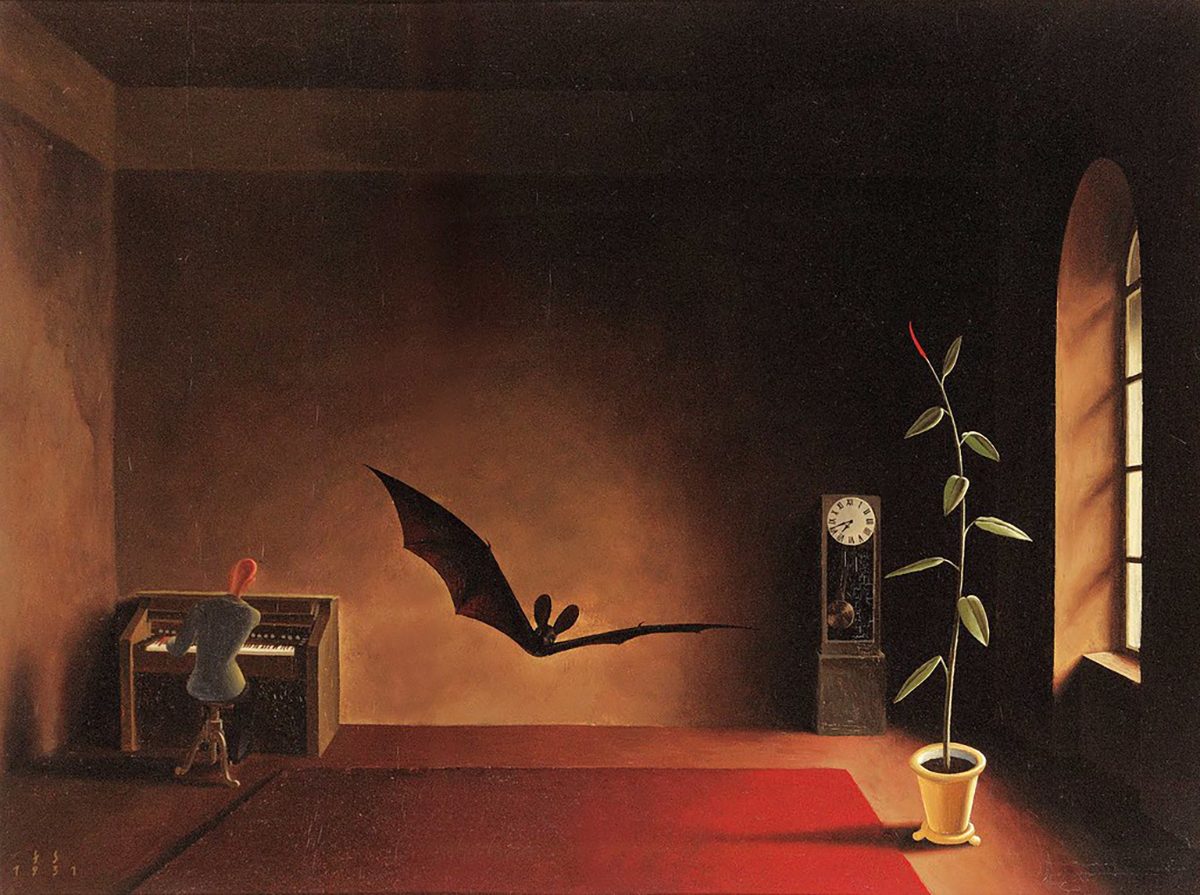
Song in the Twilight, 1931
Franz Sedlacek was born in 1891, in Breslau (today Wrocław, Poland), when the city was part of the German Empire. In 1897, he and his family moved to Linz in Upper Austria. And in 1910, Franz moved to Vienna, studying architecture for short time and then chemistry.
A self-taught artist, in 1912, his drawings were exhibited for the first time at an exhibition in Linz. After fighting for his country in WW1, Sedlacek returned to the university to finish his chemistry studies. He then found work at the Technical Museum in Vienna, where he later became head of the Chemical Industry department.
But art was his calling. He was one of the founders of an artistic association based in Linz, along with painters Anton Lutz and Klemens Brosch. In 1927, he became an active member of the Viennese Secession and regularly participated in the Secession’s exhibitions.
The idea of an avowed Nazi joining the Vienna Secession sits at odds with an easy narrative of the die-in-the-wold anti-Semite. The Secession was founded on 3 April 1897 by such avowed non-bigots as Gustav Klimt, Koloman Moser (of the brilliant Wiener Werkstätte), Josef Hoffmann and others. Under the regime of the Nazi Party banned the Secession movement as a symbol of its purge on degenerate art, just as it had banned all Jewish artists. In 1945, the Germans set fire to the building.
His work is available to buy as prints, cards and more in the shop.

Franz Sedlacek (1891-1945), ‘Der Kobold’, ”Die Bühne”, #218, 1929.
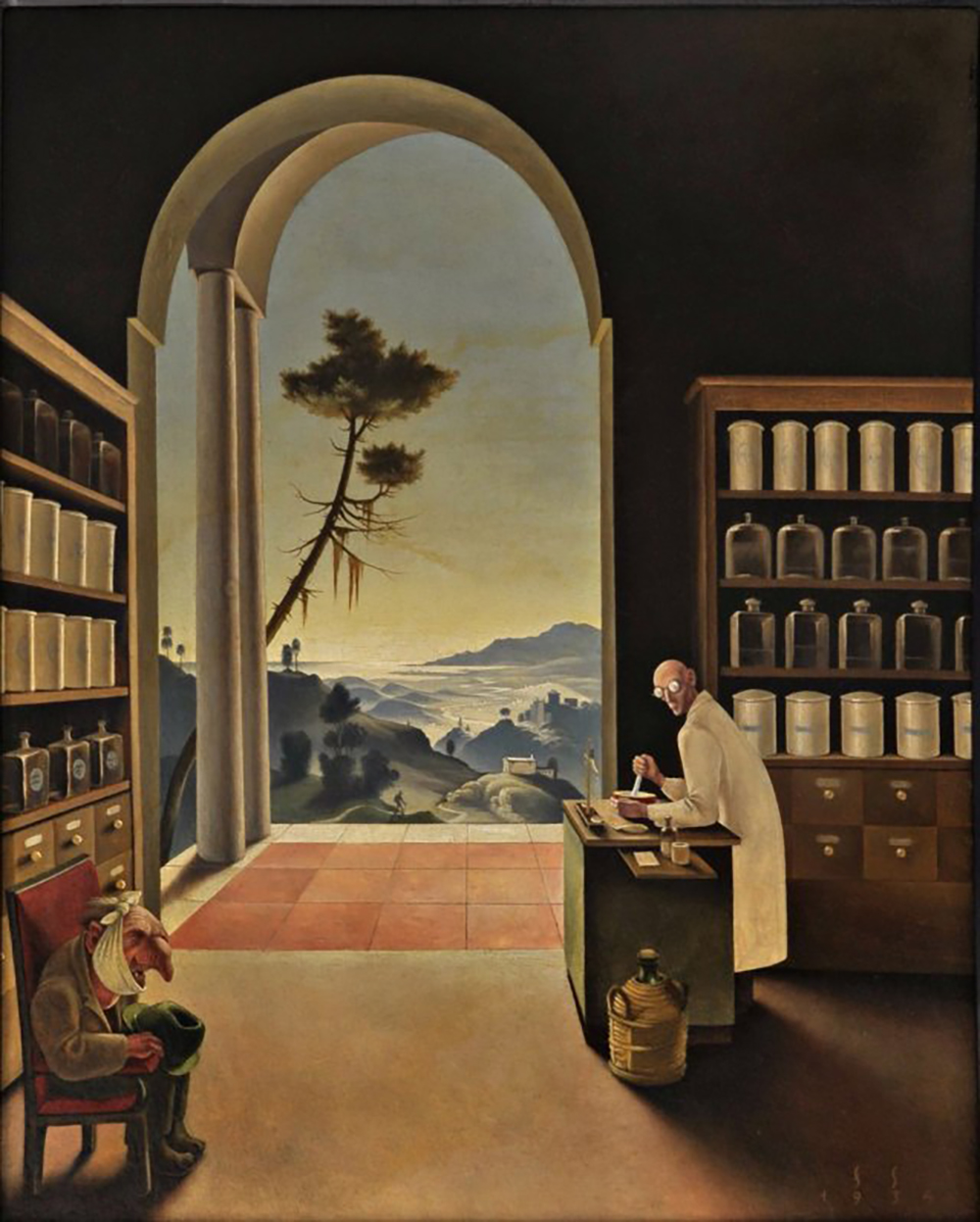
Franz Sedlacek: Die Apotheke (The Pharmacy) 1934
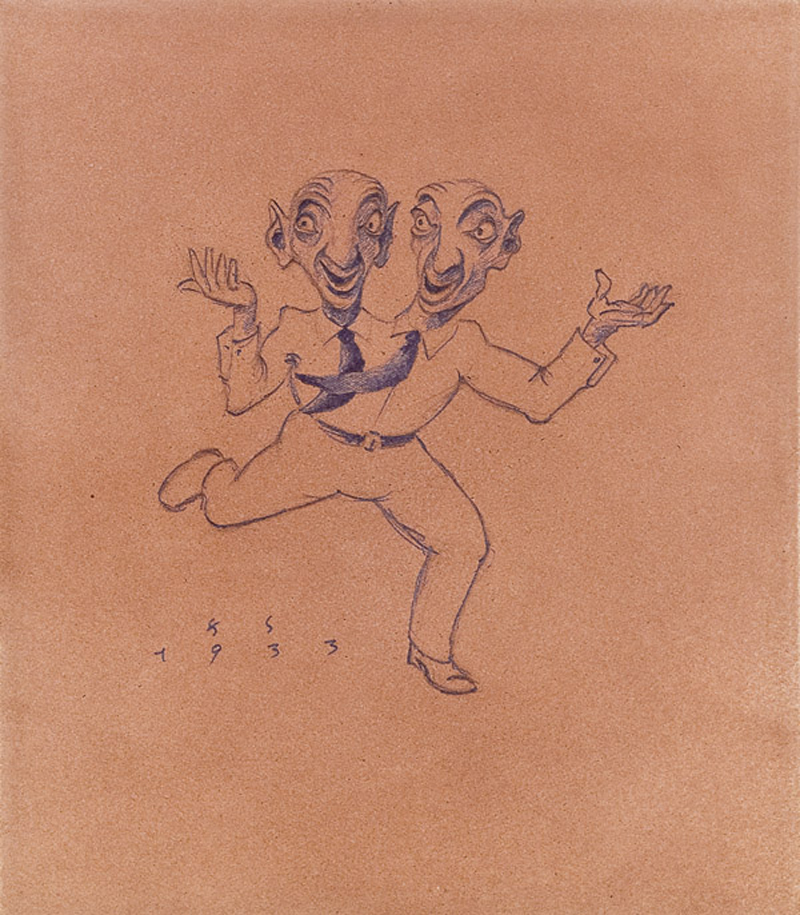
Double Heads, 1933
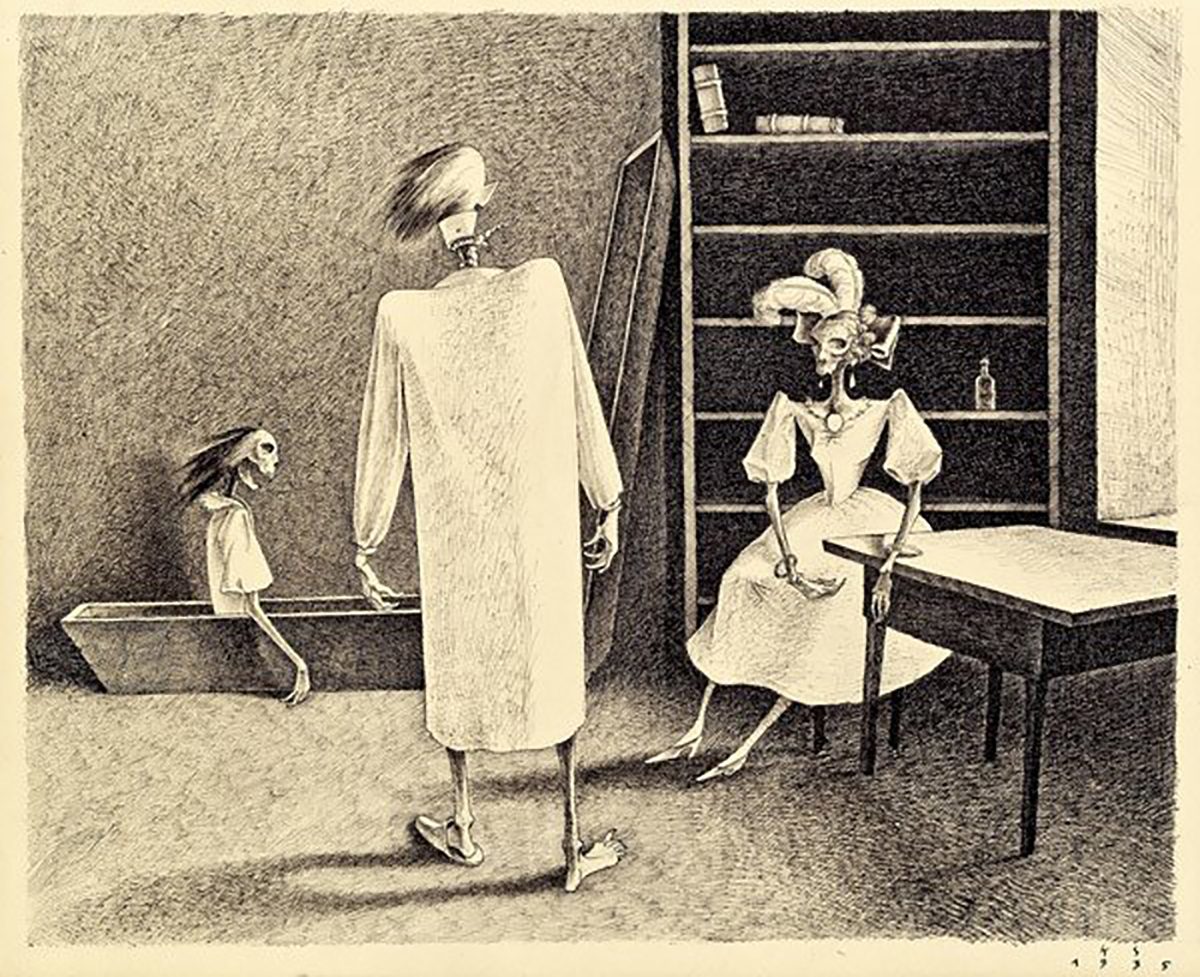
The Sad Family, 1935
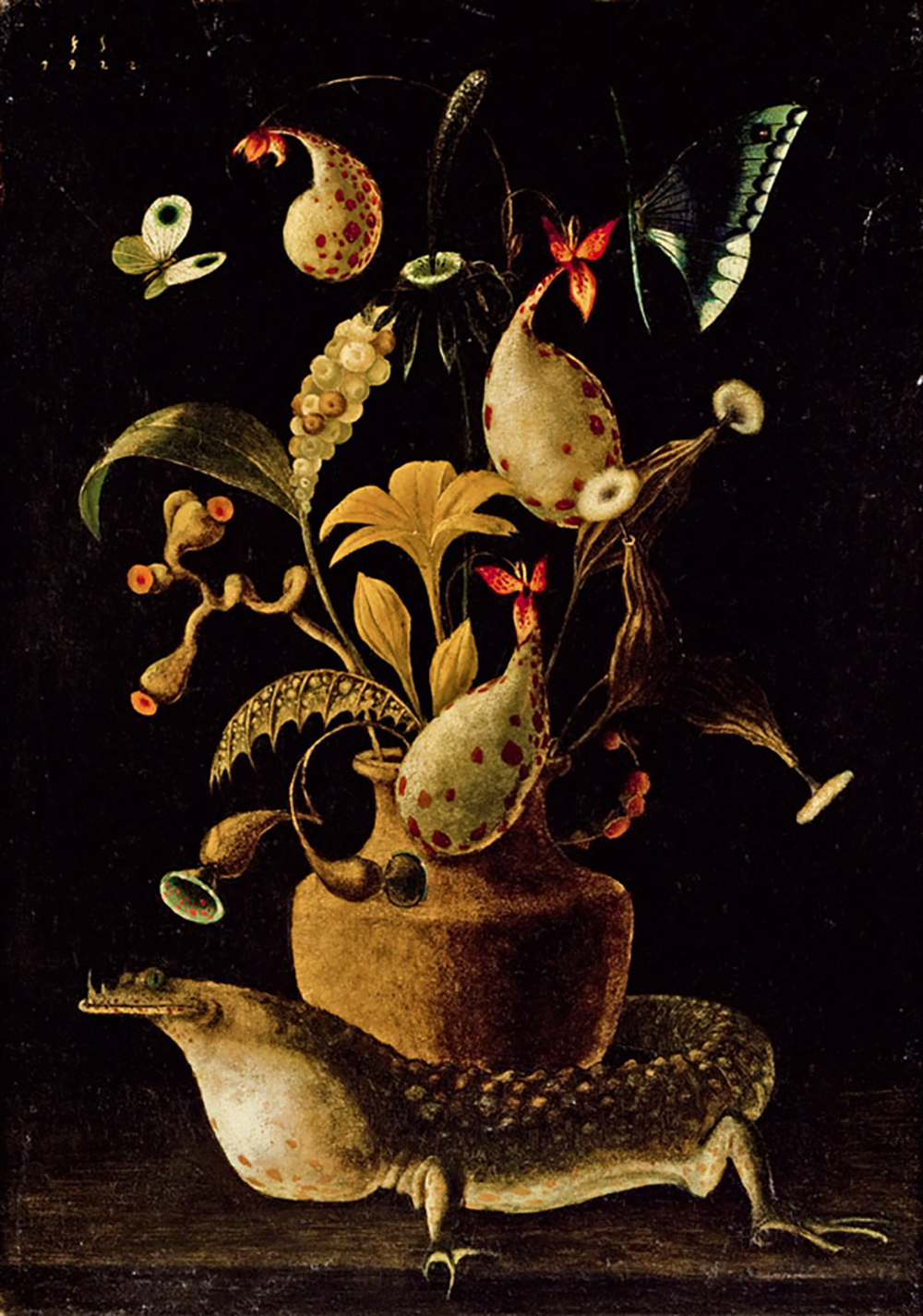
Flower Piece, 1922
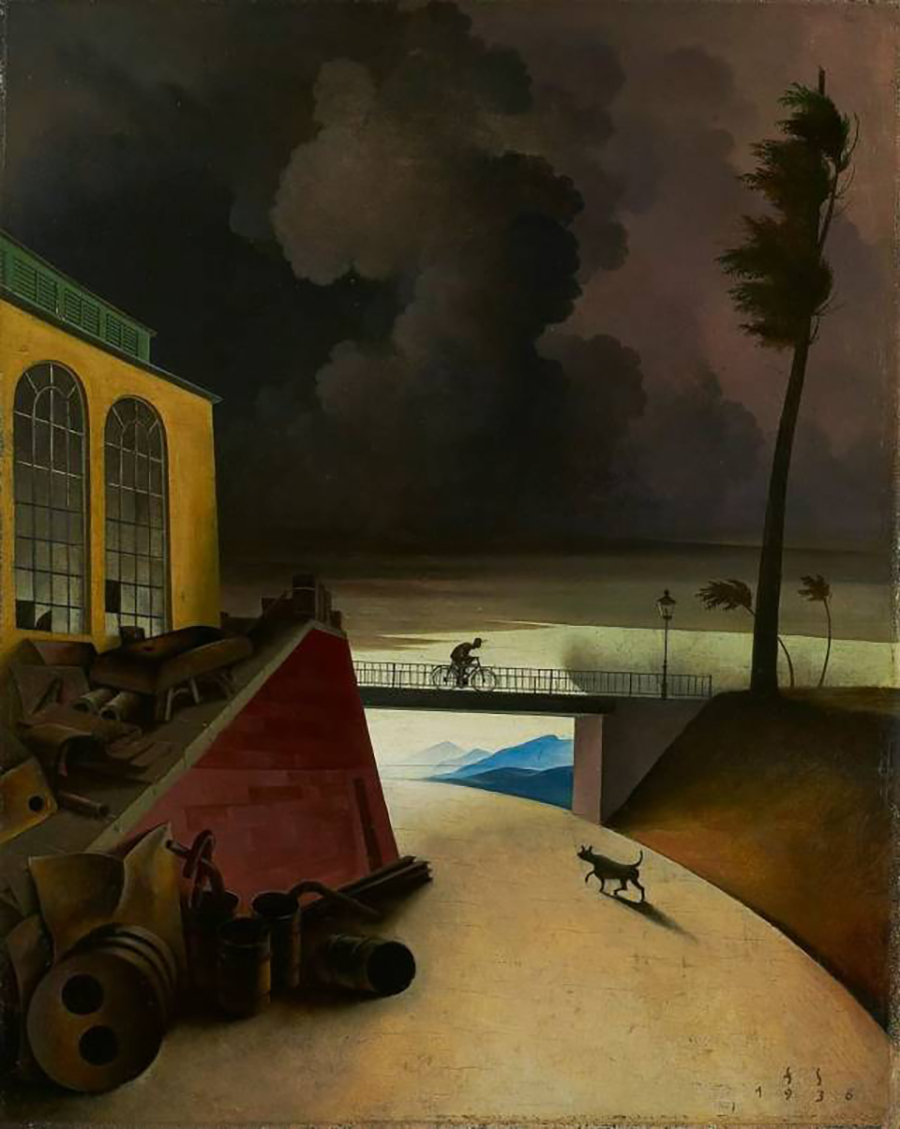
The Approaching Thunderstorm by Franz Sedlacek. 1936.
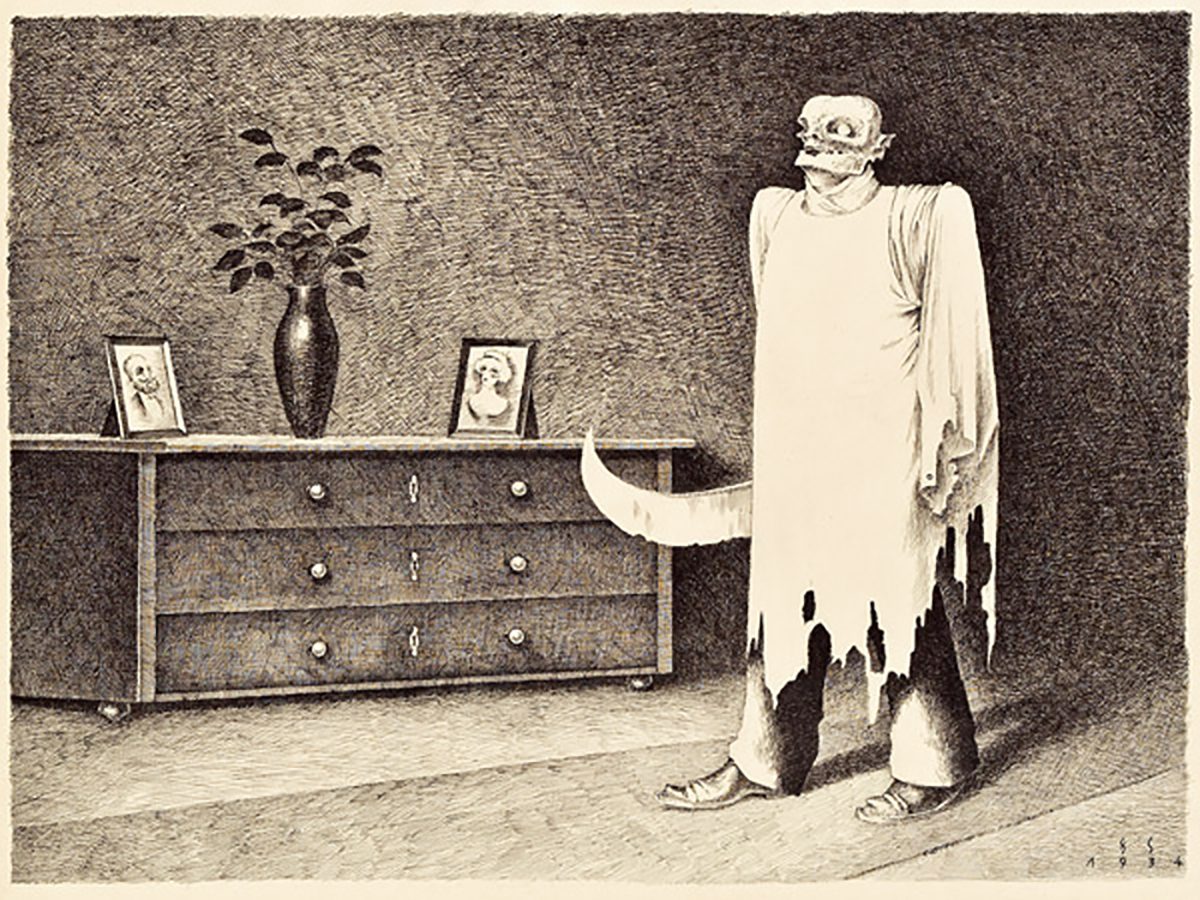
Ghost With Butcher Knife, 1934
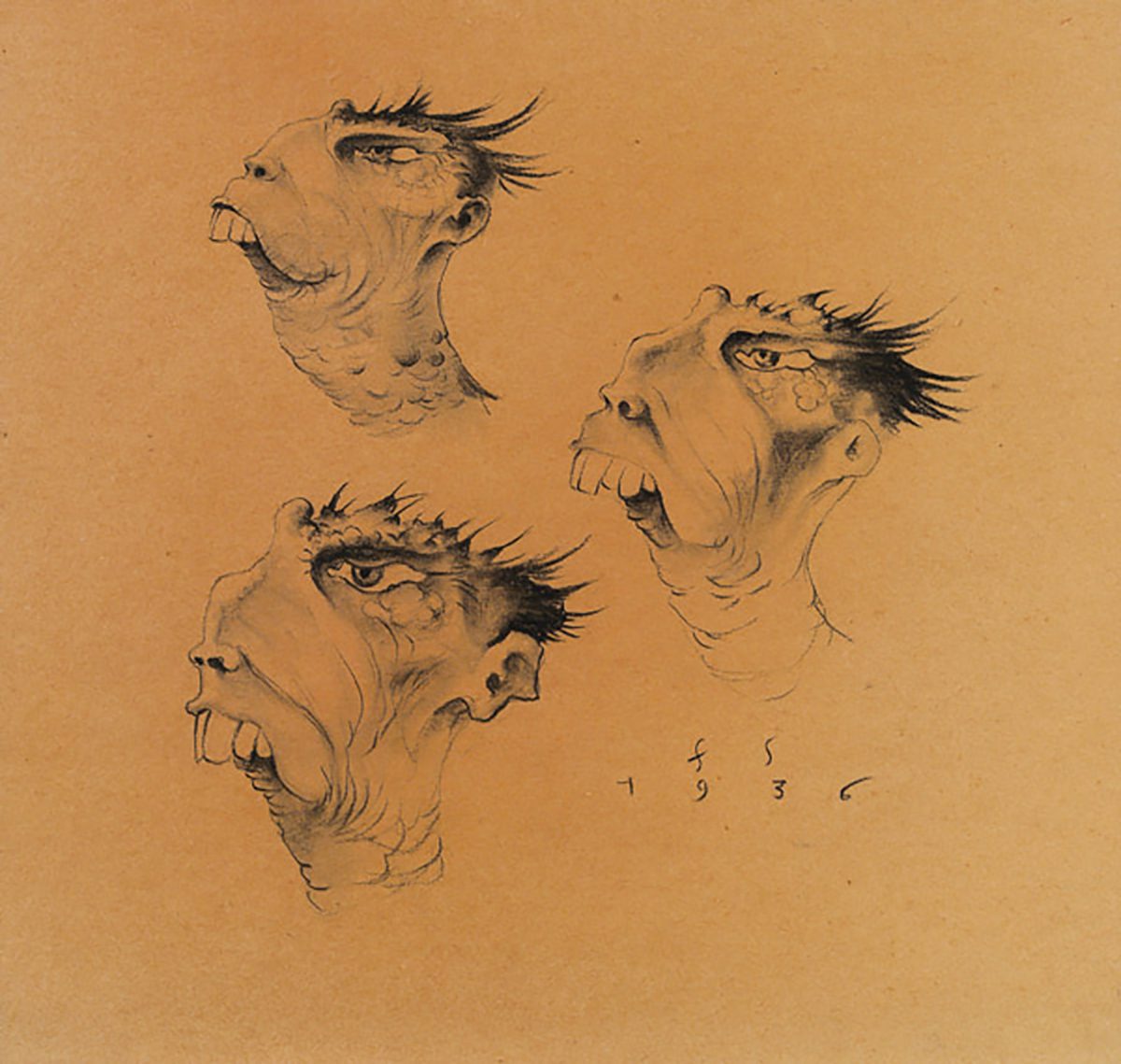
Imaginary Heads, Study, 1936
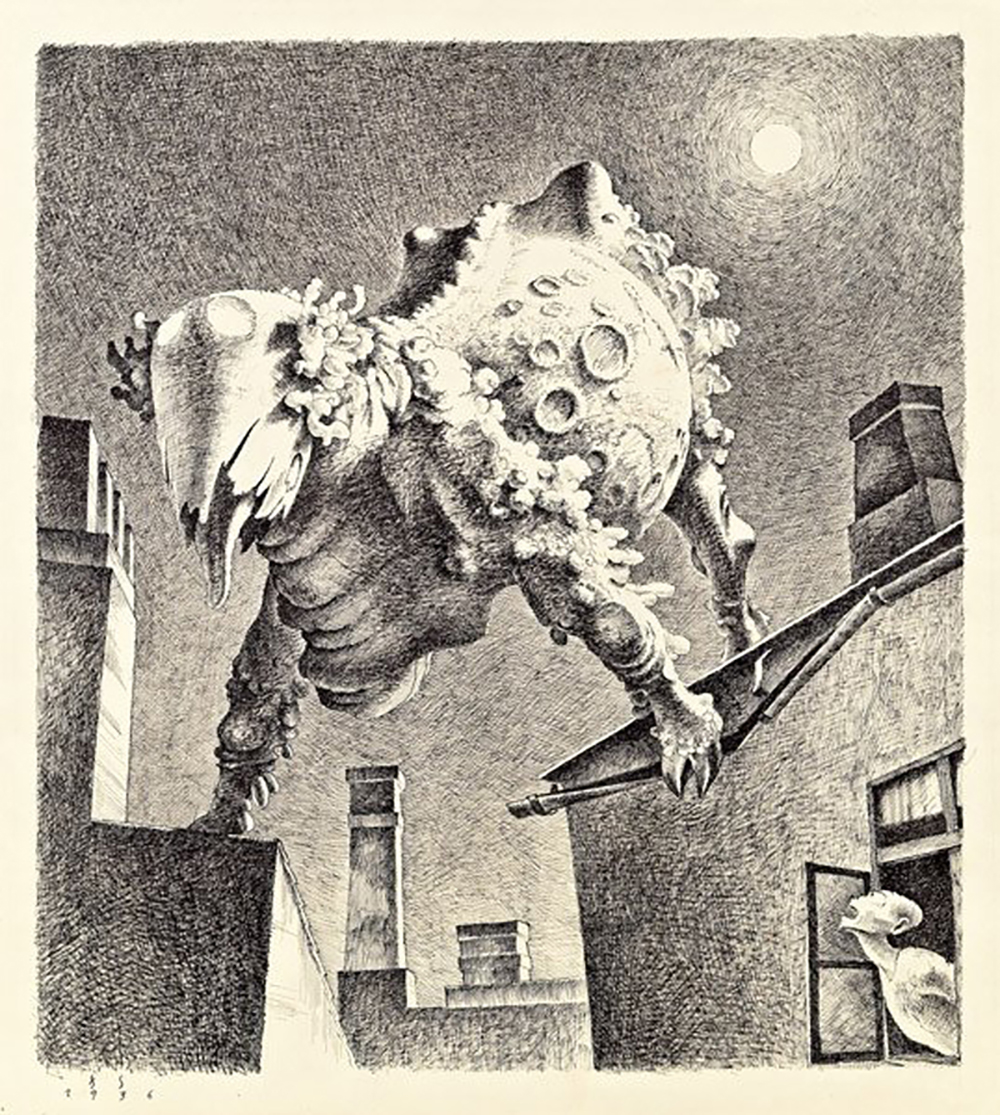
The Moon Calf, 1936
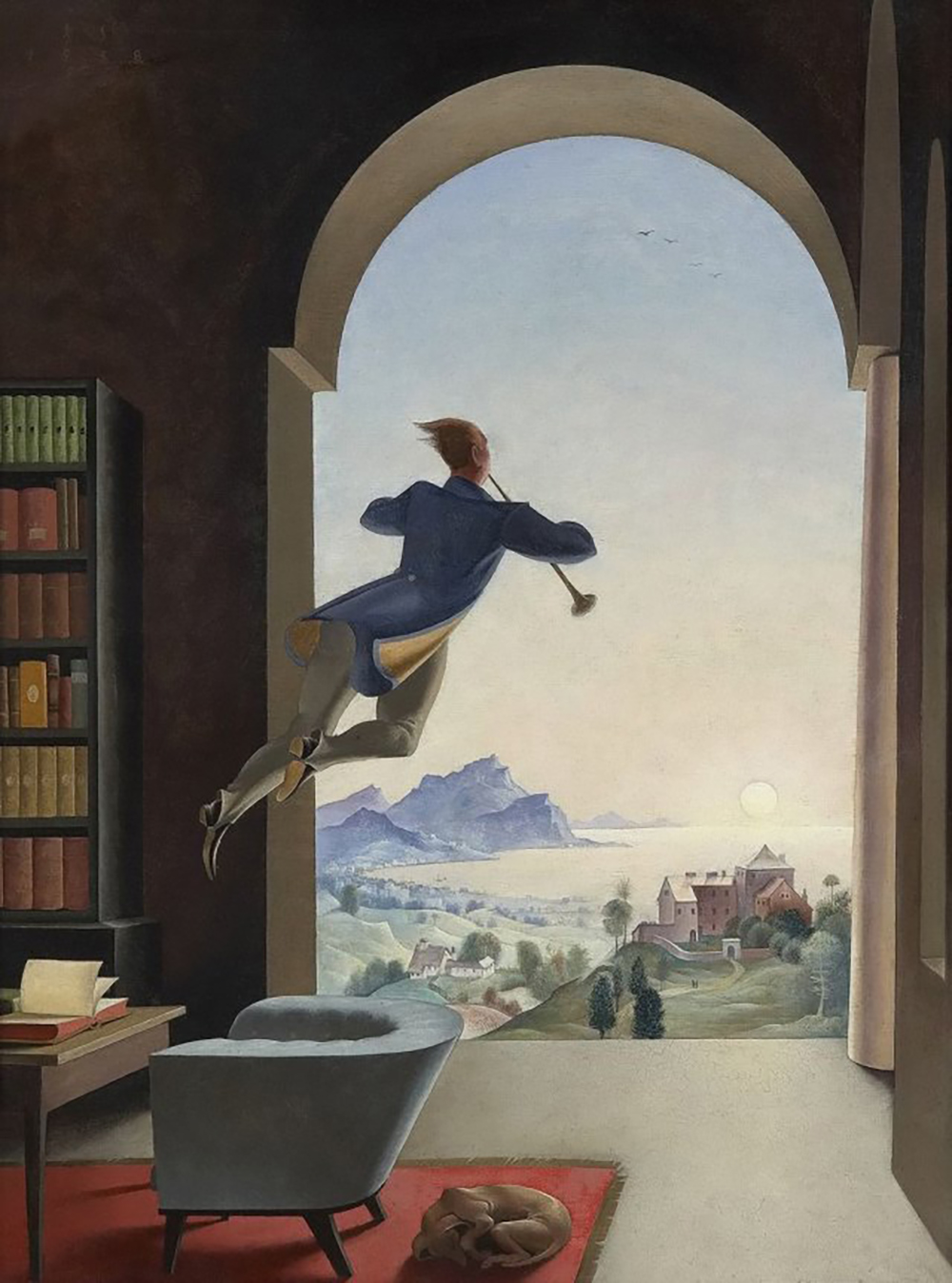
Evening Song by Franz Sedlacek, 1938
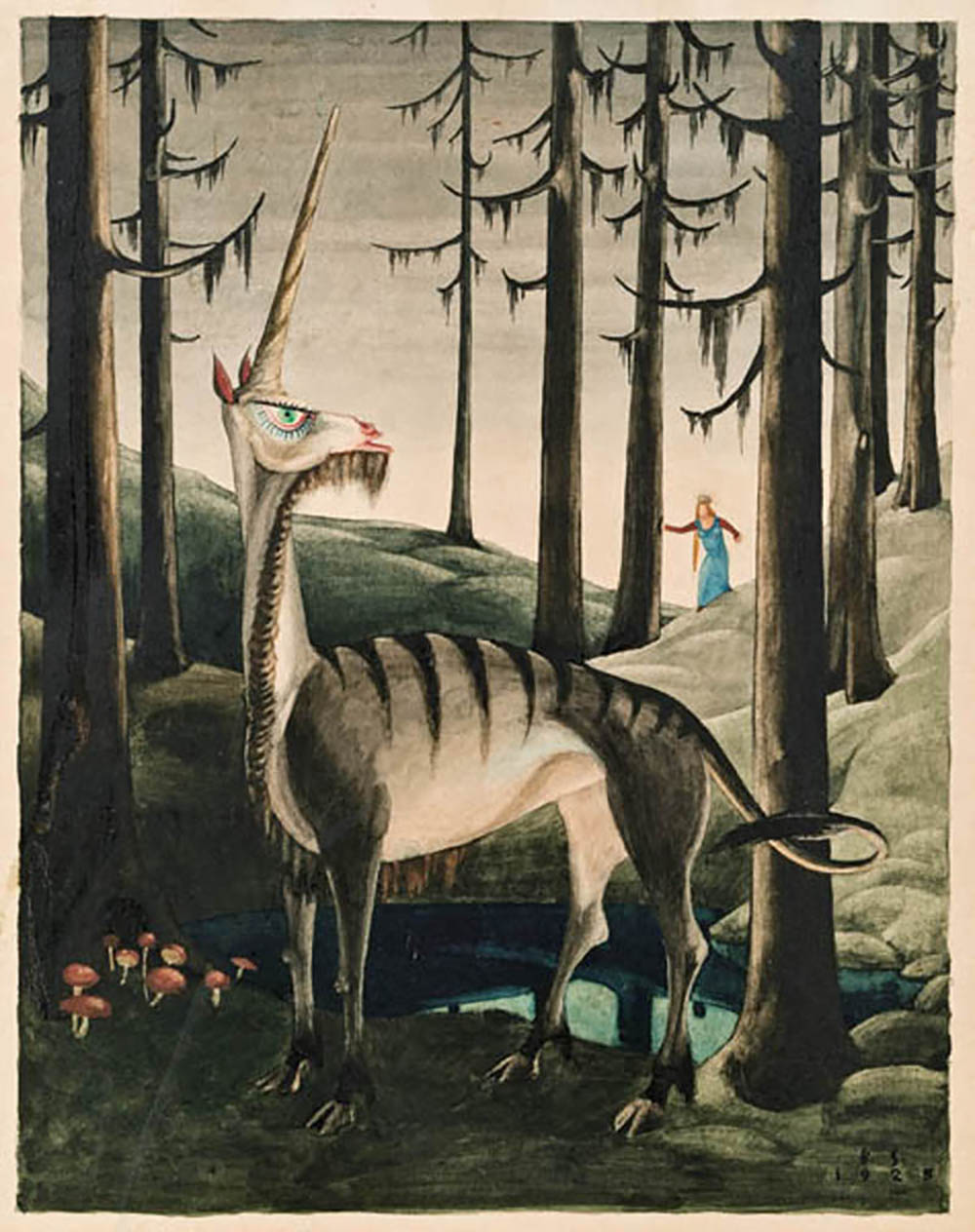
The Unicorn, 1925
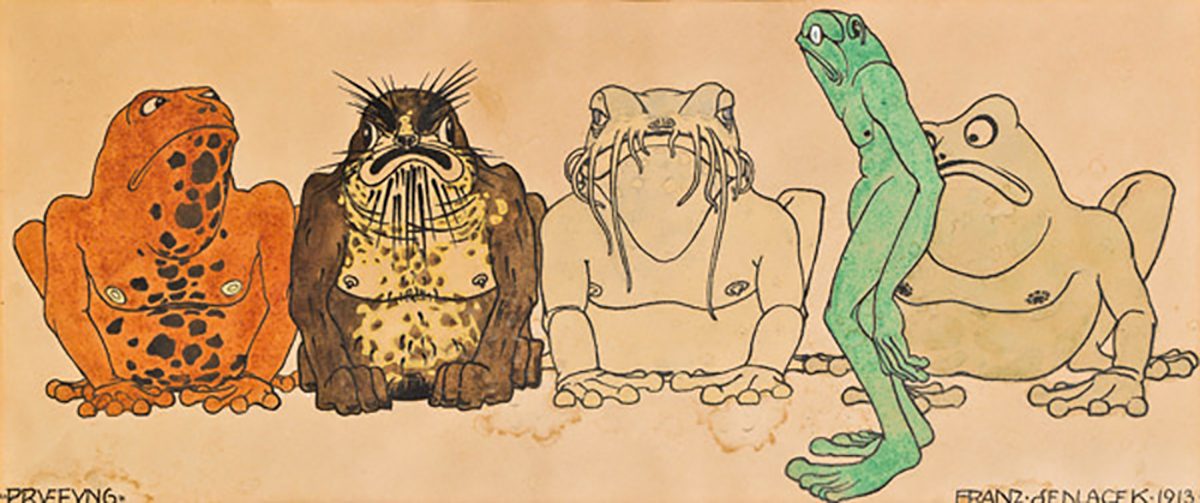
The Audit, 1913
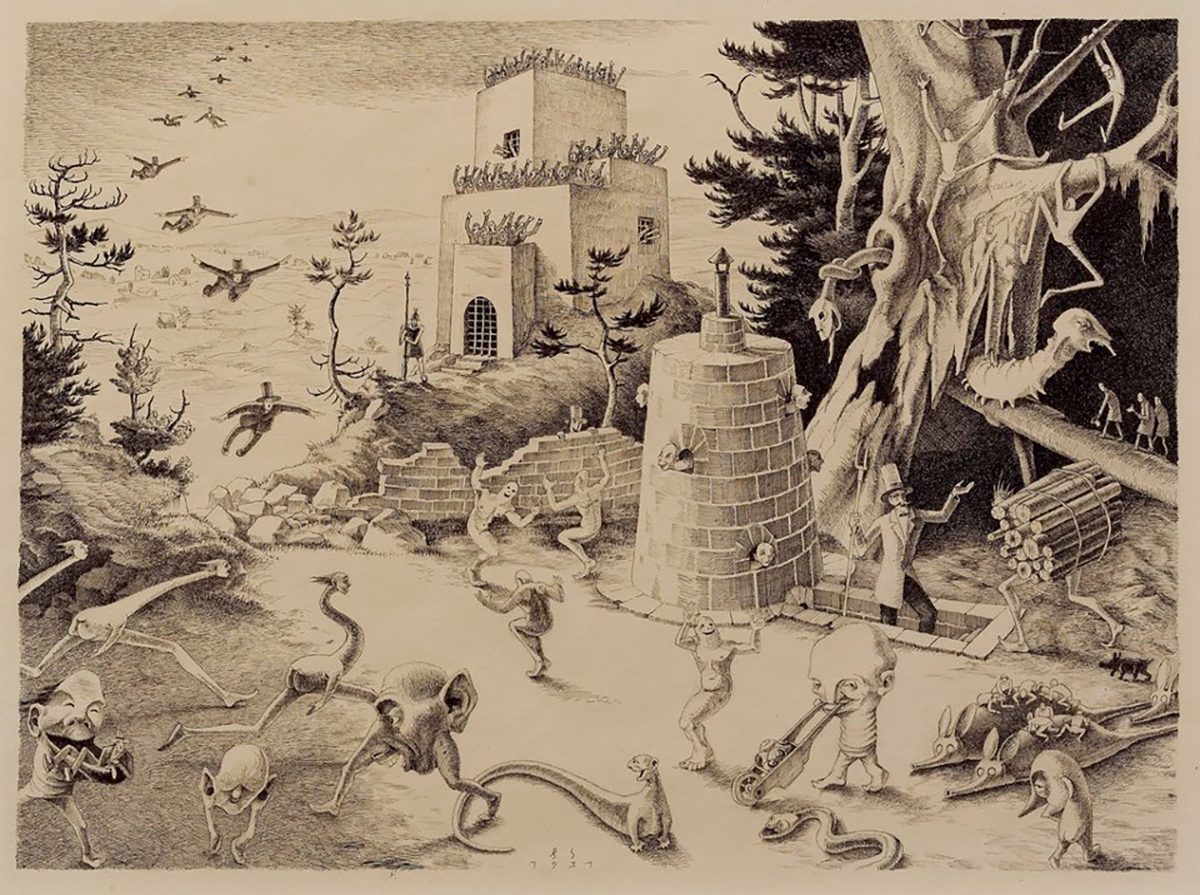
Fanciful Ink Drawing II, 1931
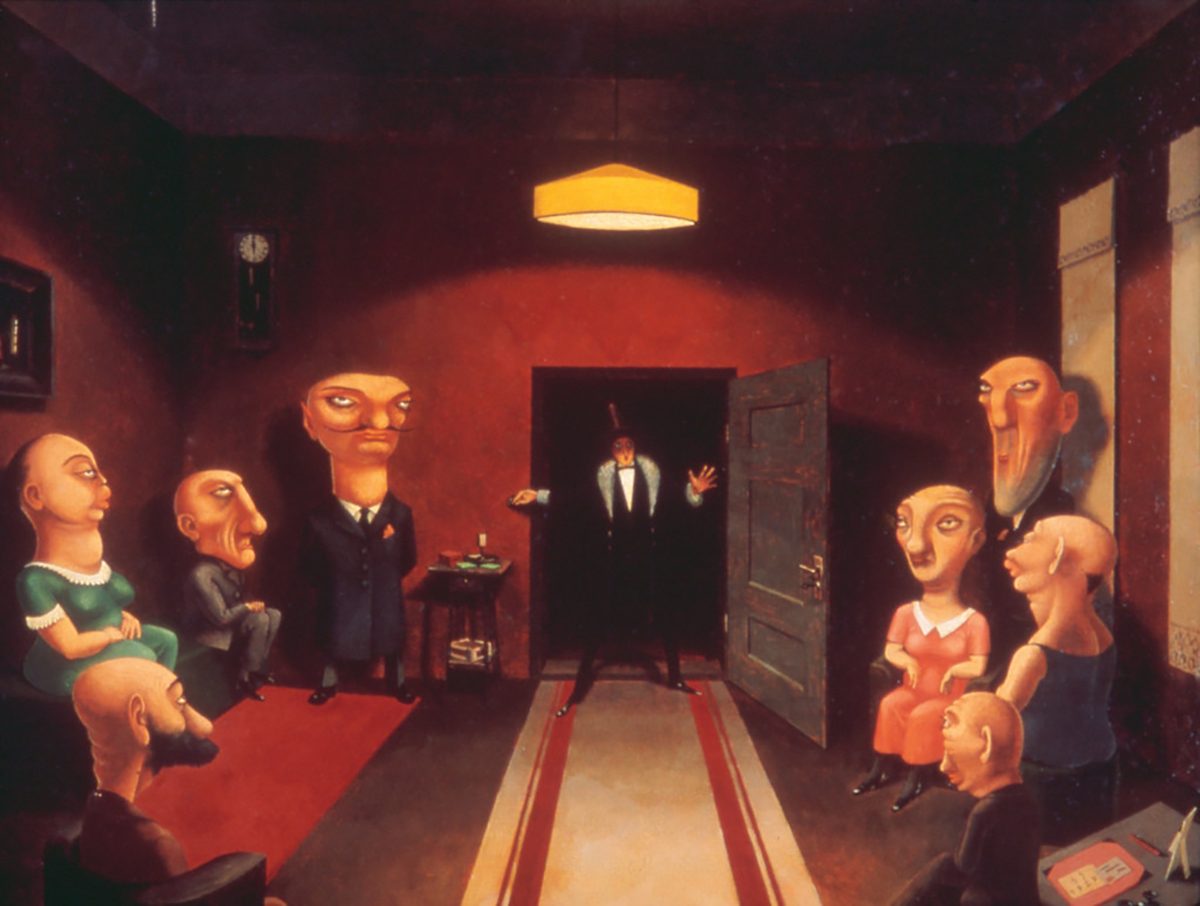
Nocturnal Homecoming, 1927
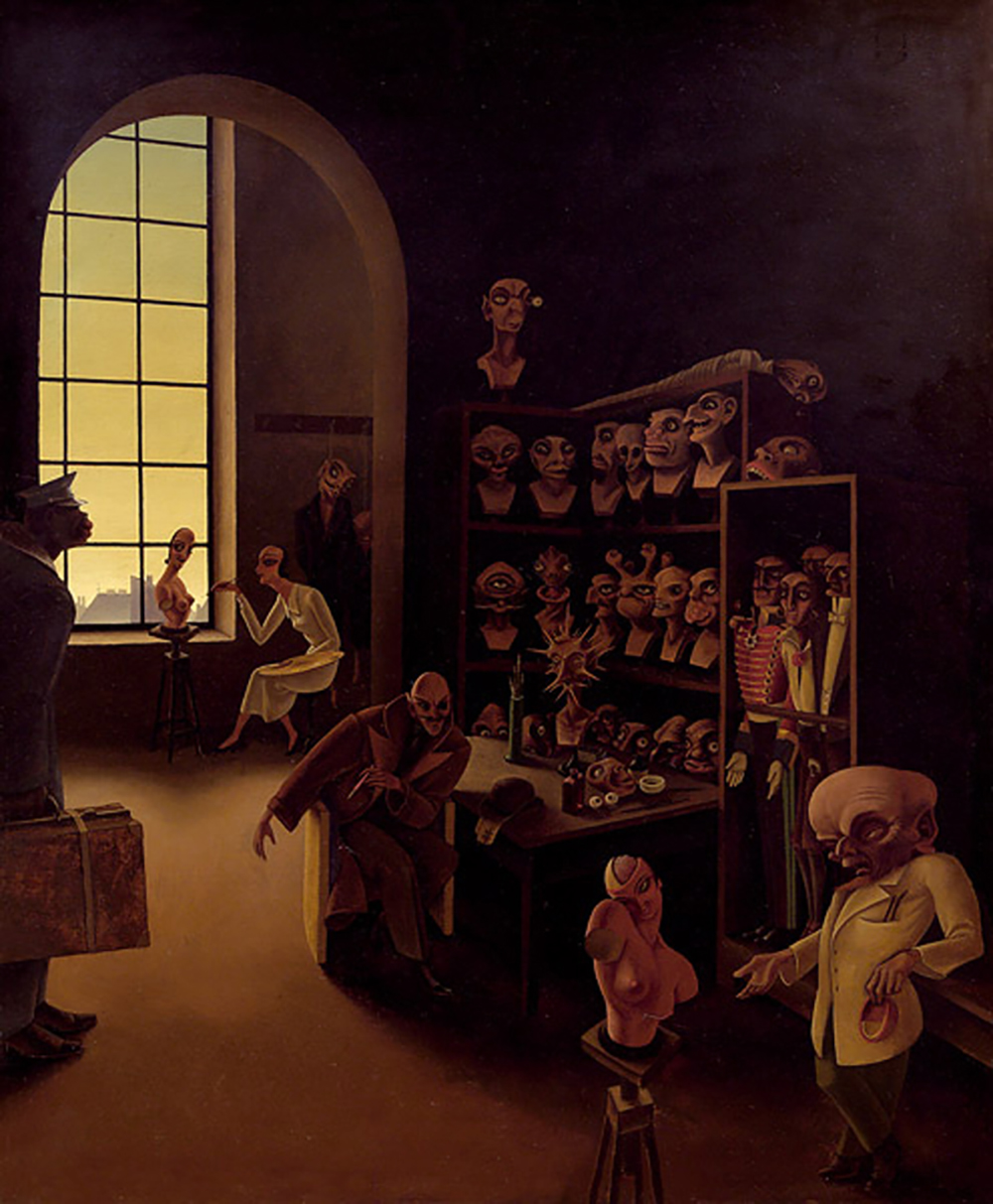
Moulage Studio, 1932
Would you like to support Flashbak?
Please consider making a donation to our site. We don't want to rely on ads to bring you the best of visual culture. You can also support us by signing up to our Mailing List. And you can also follow us on Facebook, Instagram and Twitter. For great art and culture delivered to your door, visit our shop.



